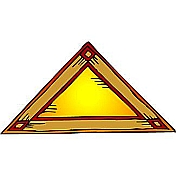
 Proper project team organization is one of the key constraints to project success. If the project has no productive and well-organized team, there’s an increased probability that this project will be failed at the very beginning because initially the team is unable to do the project in the right manner. Without right organization of teamwork, people who form the team will fail with performing a number of specific roles and carrying out a variety of group/individual responsibilities. Hence, when you plan for a new project, first you must take care of the best project team organization through team building activities.
Proper project team organization is one of the key constraints to project success. If the project has no productive and well-organized team, there’s an increased probability that this project will be failed at the very beginning because initially the team is unable to do the project in the right manner. Without right organization of teamwork, people who form the team will fail with performing a number of specific roles and carrying out a variety of group/individual responsibilities. Hence, when you plan for a new project, first you must take care of the best project team organization through team building activities.
Organizing a project team is a typical task of a project manager. Successful implementation of this task requires the manager to acquire, develop and lead a group of people who are supposed to do the project. Organization of the project team is the responsibility of the project manager who is committed to building a productive team of professionals in order to guarantee that the project deliverables will be produced on schedule, under budget and as per specification, and thereby the customer will accept those deliverables.
What is a Project Team?
Before getting started to organize a project team, it is essential to understand the project team definition. Senior supervisory staff (executives, project managers) as well as group leaders should clearly understand the definition because such an understanding is required for establishing teamwork, maintaining continuous training, establishing productive communications, and supporting collaboration. Here’s the project team definition:
A Project Team is an organized group of people who are involved in performing shared/individual tasks of the project as well as achieving shared/individual goals and objectives for the purpose of accomplishing the project and producing its results. The team consists of the full-time and part-time human resources supposed to collaboratively work on producing the deliverables and moving the project towards successful completion.
A group of people turns into a team when every person of the group is capable of meeting the following conditions:
- Understanding the work to be done within the endeavor
- Planning for completing the assigned activities
- Performing tasks within the budget, timeline, and quality expectations
- Reporting on issues, changes, risks, and quality concerns to the leader
- Communicating status of tasks
- Being a person who can jointly work with others
So when you look for candidates to your project group, first make sure a candidate is ready to meet all the conditions; otherwise switch to another candidate. If you understand this, you get more chances to find the best candidates.
Three Conventional Roles
Every team, regardless of the project type, size and nature, has three roles (defined as “conventional”). These roles are:
- Leader. A project team leader is a person who provides leadership and guidance to the team and takes responsibility for the results of teamwork. The team leader role involves the development and encouragement of the team through training, leading, motivation, recognition, rewarding and other activities that stimulate or force team members to do the required tasks.
- Member. A project team member is a person who is actually involved in doing assigned tasks. Team members directly access the project and actively evolve its processes. They’re subordinated to the team leader.
- Contributor. A project team contributor is a person or an organization that participates in teamwork but is not actually involved in performing tasks and carrying out project team responsibilities. Contributors help improve the project through giving valued suggestions, expert judgment and consultation. They aren’t responsible for the project results. Often project team contributors have an interest or concern in the project, so they facilitate successful completion.
When organization of the project team is appropriate, all the roles are allocated adequately. Successful teams often work under the direction and supervision of project managers who oversee the work of the team leader and provide expert advice to team members. In this situation, contributors work in collaboration with the managers.
Responsibilities and Duties
A team can be responsible for a variety of duties and responsibilities, depending on the project they’re involved in. Good project team organization entails proper setting of team responsibilities and duties, while considering specific goals and objectives of the project. Here’re several common responsibilities and duties of a project team:
- Gaining the right understanding of the amount and scope of assigned work
- Following the planned assignments
- Increasing the details level per task and activities, if needed
- Completing the assigned tasks within the constraints of scope, quality, time and cost
- Inform the leader of any issues arisen
- Proactively communicate and collaborate with other team members
The Organizational Chart
Usually all possible roles, duties and responsibilities of a team are listed in the project team organizational chart. Below you can read the definition.
A Project Team Organizational Chart is a detailed and document-based graphical representation of the team to outline specific roles, duties and responsibilities of the team members and other stakeholders participating in the project, and to formally constitute how exactly they are expected to collaborate with each other throughout the course of the project implementation process. It is also regarded as a mechanism of managing team development processes through designing training programmes based on the group relationships established by the chart.
The team leader usually uses the organizational chart to thoroughly keep track of the processes associated with team management, and to record particular relationships between group members during the course of the implementation life-cycle. Team members use the chart to explore what roles and responsibilities they have been assigned to, who will share those roles, and who will manage and lead their efforts.
Here’s a small checklist of the key tasks for creating a project team organizational chart:
- Make a Project Team List. First you need to list all the people (and theirs names) who are supposed to be the participants of your project team. You can do this after you’ve finished interviews with candidates to the team.
- Allocate the Conventional Roles. Now you must think about what individuals will take what roles. Use the results of your interviews to start with leaders, then list members and contributors.
- Assemble the Whole Team. Use your team list with the details on the roles assigned to your people to assemble the team. This means you need to formally constitute the team.
- Identify the Stakeholders. Your team if formed, now you need to identify the stakeholders or those people/organizations having a direct interest in or affected by your project. They are the sponsor and the customer. Note that although the stakeholders are not participants of the team, they’re added to the project team organizational plan because they influence decisions of the team.
- Build the chart. Finally use all the data to create the chart and display relationships between the team and stakeholders on it. The relationships will show who is reporting to whom and what supervisory mechanism is used for leading teamwork.











